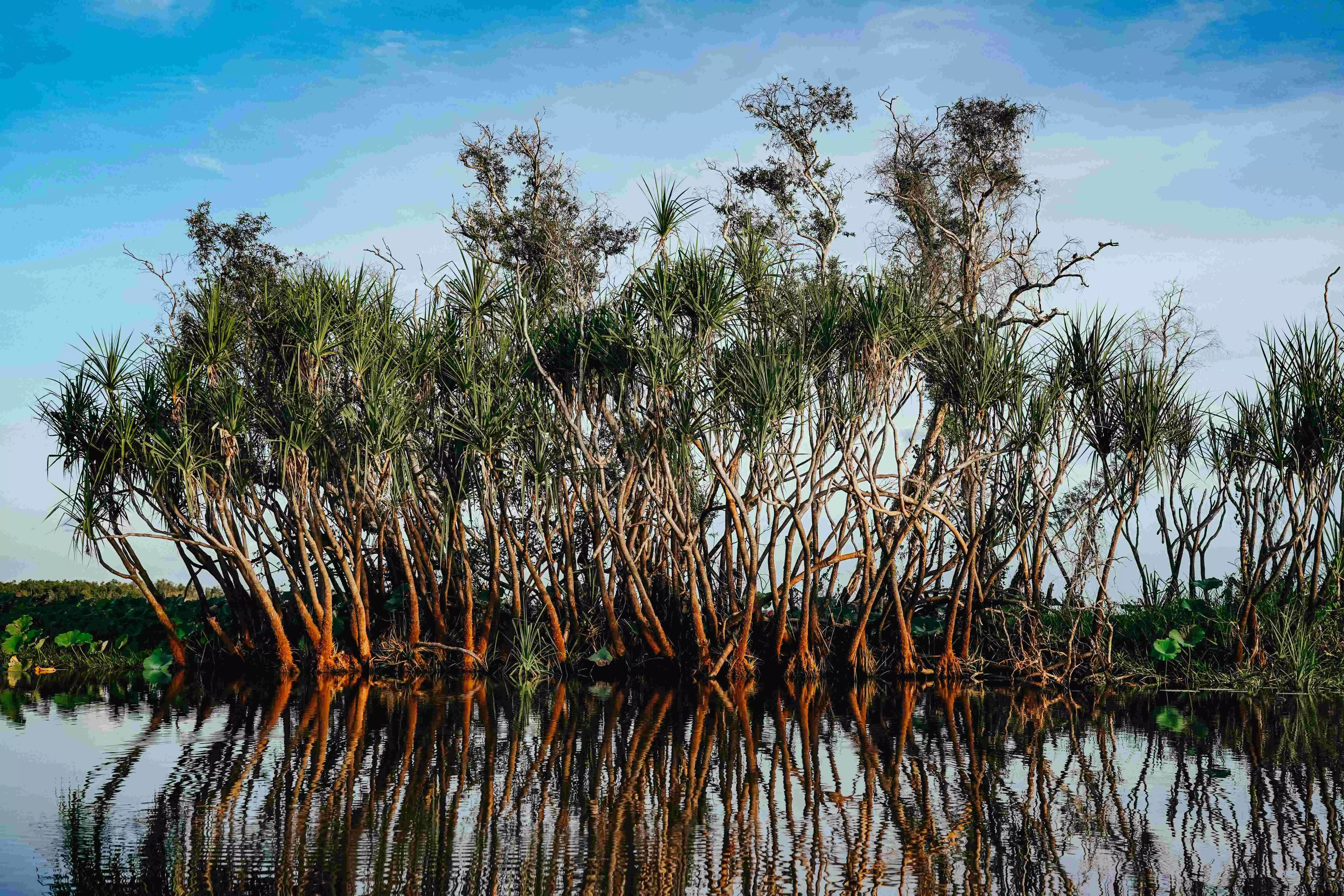Solution in the Swamps
Blue carbon ecosystems—including mangroves, marshes, and seagrasses—quietly fight climate change by storing massive carbon reserves. Their preservation is essential for ecological balance, shielding coasts, and sustaining livelihoods amid rising sea levels

In the last article, we had discussed the impact of climate change on coastal areas, which would be driven mainly by rising sea levels. The coastal and marine ecosystems would also come under massive strain. We had also discussed the importance of resilient marine infrastructure and use of technology such as early warning systems. Another way to push back against the adverse effects of climate change in coastal areas is to preserve and promote ‘blue carbon’. ‘Blue Carbon’ is basically the mangroves, sea marshes and sea grasses found in coastal and marine ecosystems, which have a high carbon absorbing capacity and are important for climate change mitigation and adaptation. We will discuss the characteristics and importance of ‘Blue Carbon’ in this article.
What is ‘Blue Carbon’?
Blue carbon is simply any carbon stored and sequestered by the ocean. In coastal areas, blue carbon is basically the carbon stored in vegetation such as mangroves, sea grasses and sea marshes and the deep soils that remain under water. While the area under such vegetation is limited across the world’s coasts, it is important because it has a high capacity to absorb far more carbon than other vegetation such as tropical forests in the long term on a per acre basis. The coastal ecosystem has come under threat over the past few decades because of the reclamation of land from mangrove sites for residential purposes (e.g. in the US coasts off Florida) and marine farming for shrimps and palm plantations (Asia and SouthEast Asia). Moreover, with many parts of the coastal wetlands becoming more accessible by road, there is more human activity, which leads to greater stress on the coastal wetlands (Sundarbans mangroves in India and Bangladesh).
Importance of ‘Blue Carbon’
Apart from the obvious importance of storing high amounts of carbon, coastal wetlands also have other unique characteristics. Most of the vegetation grows in swamps, where salt water flooding is common. This vegetation absorbs carbon dioxide and uses it through photosynthesis to grow. These plants are eaten by animals, who spread the carbon in the ecosystem. In addition, when these animals die, their decomposition is far slower than on land because of a lack of oxygen (close to anaerobic decomposition), leading to carbon staying in the soil for longer periods.
Coastal wetlands also act as a bulwark against the cyclones and storms that regularly hit the coasts. They are also an excellent habitat for fish, reptiles, mammals, birds, and a variety of invertebrate organisms. Moreover, the blue carbon ecosystems support subsistence livelihoods like fishing in poor countries of Asia and Africa. They also help in preventing coastal erosion, which, in turn helps coastal cities and their infrastructure.
The preservation of the coastal wetlands and their ecosystems is therefore critical in our efforts to limit greenhouse gas emissions. National policies are important and must declare coastal wetlands as protected areas. International agreements such as the Ramsar Convention on Wetlands of 1971, the Blue Carbon Initiative (BCI) organised by the Intergovernmental Oceanographic Commission of UNESCO, the International Partnership for Blue Carbon (IPBC) launched at the 21st Conference of Parties under UNFCCC in Paris in 2015, and the Global Mangrove Alliance launched in 2018 by NGOs, governments, industry and the local community are also crucial to protect the blue carbon ecosystem. These global initiatives to protect and promote coastal wetlands facilitate research and development, strengthen coastal management, undertake disaster management, and draw up climate mitigation- and adaptation-related plans and policies.
Some examples of blue carbon initiatives across the world are: preservation of the Florida Keys National Marine Sanctuary in the US, mangrove conservation under the Mikoko Pamoja project in Kenya, RePLANET Sulawesi mangrove project focused on restoring mangroves on abandoned shrimp farms, and the Mangrove Initiative for Shoreline Habitats and Tangible Incomes (MISHTI) in India.
Conclusion
Protection, preservation and promotion of coastal wetland ecosystems is important, not only for absorbing carbon, but also for sustainable development through providing livelihoods in poor countries and protecting the shores from extreme weather events in all countries. Many initiatives at the national and international level have taken forward this crucial task of preserving the blue carbon ecosystem. These initiatives need to continue and be scaled up to address the challenges of global warming.
The writer is Additional Chief Secretary, Department of Cooperation, Government of West Bengal



